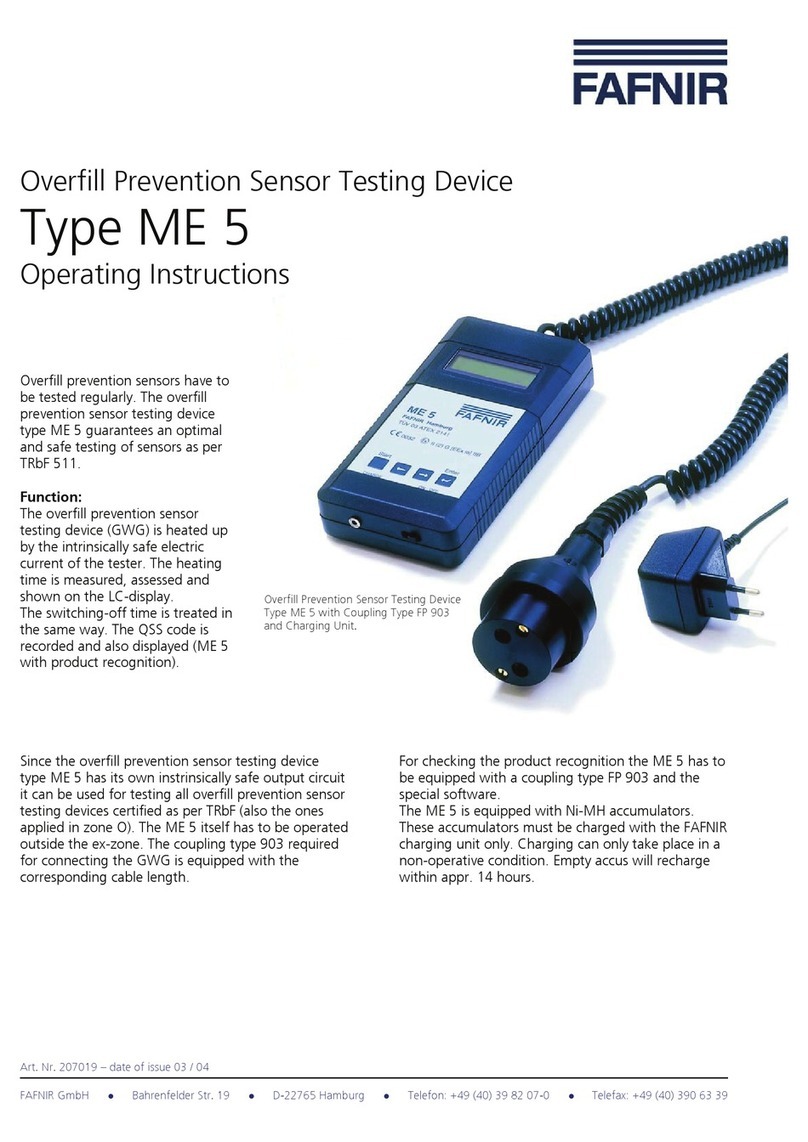
I Contents
Table of contents
1Overview .................................................................................................... 1
2Safety instructions .................................................................................... 2
3The ME 6 ... overfill prevention sensor testing device ......................... 3
3.1 Design and construction .................................................................................................................3
3.2 Function .................................................................................................................................................4
3.3 Scope of delivery................................................................................................................................5
4Operation ................................................................................................... 6
4.1 Fundamentals ......................................................................................................................................6
4.2 Start-Up .................................................................................................................................................8
4.2.1 Basic settings .......................................................................................................................................9
4.3 Testing the Overfill Prevention Sensor.....................................................................................11
4.3.1 Heating-up time ...............................................................................................................................13
4.3.2 Switch-off time..................................................................................................................................13
4.3.3 QSS Code (ME 6 P) ..........................................................................................................................15
4.4 Power saving (stand-by) mode and reactivation..................................................................15
4.5 Settings ................................................................................................................................................16
4.5.1 Country selection .............................................................................................................................17
4.5.2 Date and time....................................................................................................................................17
4.5.3 Backlight ..............................................................................................................................................18
4.5.4 Touch screen calibration................................................................................................................18
4.5.5 QSS code identifiers........................................................................................................................20
4.5.6 Readings archive...............................................................................................................................21
4.5.7 Delete readings.................................................................................................................................21
4.5.8 Resetting to factory settings........................................................................................................22
4.6 Power supply......................................................................................................................................22
4.6.1 Changing the rechargeable batteries .......................................................................................22
4.6.2 Regular charging of the rechargeable batteries necessary ..............................................23
5PC software..............................................................................................24
5.1 Driver installation .............................................................................................................................24
5.2 Starting the ME 6 Software...........................................................................................................24
5.2.1 Settings ................................................................................................................................................24
5.2.2 Records ................................................................................................................................................26




























